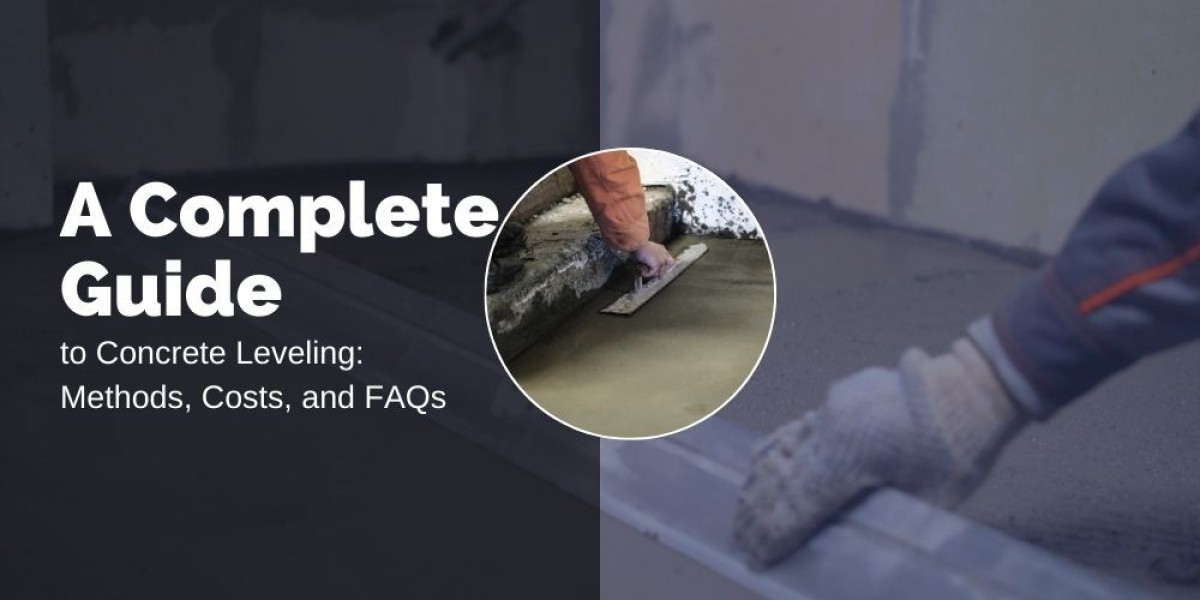Concrete leveling is vital for anyone dealing with uneven surfaces in their driveways, patios, sidewalks, or garage floors. Uneven concrete is unsightly, can pose a safety hazard, and lead to further structural issues over time. This guide breaks down everything homeowners need about concrete leveling, covering the benefits, methods, costs, and frequently asked questions. These are the key points:
- What concrete leveling is and why it's essential
- Comparison of concrete leveling methods
- Insights into concrete leveling costs
- Answers to common questions about concrete leveling
- Tips for choosing a reputable contractor
What is concrete leveling, and why is it important?
Concrete leveling is correcting uneven concrete surfaces by lifting and stabilizing the existing concrete without needing a total replacement. This process, also known as slab jacking or mud jacking, offers multiple benefits:
- Prevents structural damage: Uneven concrete can worsen over time, leading to more severe issues in the foundation and other parts of your property.
- Increases safety: For anyone going over uneven ground, there is a risk of stumbling and injury.
- Improves aesthetics: Smooth, level concrete enhances a home's curb appeal.
- Cost-effective: Instead of a costly replacement, concrete leveling provides a much more affordable solution to improving the concrete of your concrete.
Comparing Different Concrete Leveling Methods
A few methods are available for concrete leveling, each with distinct advantages. Two popular approaches include polyurethane foam leveling and traditional mudjacking. Here's how they work:
Polyurethane Foam Leveling
- How it works: This method involves injecting polyurethane foam under the slab. The foam expands, filling voids and lifting the slab back into place.
- Benefits:
- It is lightweight and doesn't add much pressure to the ground below.
- It is fast-acting and typically cures within 15 minutes.
- It is more durable, with a longer lifespan than traditional mudjacking.
- Best For: Large, sunken slabs and areas requiring a quick turnaround.
Traditional Mudjacking
- How it Works: A slurry mixture (often mud or a cement-based mix) is pumped beneath the slab to lift it back into place.
- Benefits:
- Generally more affordable than polyurethane leveling.
- Adequate for larger voids or substantial leveling needs.
Both methods are effective; however, polyurethane tends to be more precise and durable, while mudjacking is often more budget-friendly.
How Much Does Concrete Leveling Cost?
Concrete leveling costs can vary based on several factors, including the method, project size, and the company. Here's a breakdown of what typically impacts concrete leveling costs:
- Method choice: Polyurethane foam leveling is generally more expensive than mudjacking due to its durability and faster cure time.
- Project size: Larger areas require more material and labor, driving up costs.
- Condition of existing concrete: Additional work may be needed if the concrete is severely damaged, increasing the overall expense.
- Location: Costs may vary depending on where you live and local pricing customs.
Concrete leveling can range from $3 to $7 per square foot for mudjacking and $5 to $25 for polyurethane foam. Getting a few estimates ensures you get fair concrete leveling costs for your project.
Frequently Asked Questions About Concrete Leveling
Homeowners often have many questions about concrete leveling. Here are answers to some of the most common inquiries:
- How long does concrete leveling last?
- Properly installing polyurethane leveling can last 10-15 years or more. Mudjacking generally lasts 5–10 years, depending on soil conditions.
- Is concrete leveling environmentally friendly?
- Polyurethane foam is a synthetic product, but reputable contractors typically use eco-friendly options with minimal environmental impact.
- How long does it take to complete?
- Polyurethane foam leveling usually takes under an hour, while mudjacking may take a few hours.
- Can I walk or drive on it immediately?
- With polyurethane foam, you can usually walk or drive on the concrete within 15 minutes of completion. Mudjacking requires a curing period, typically 24 hours or longer.
How to Choose a Reputable Concrete Leveling Contractor
Selecting the right contractor for concrete leveling is crucial for ensuring quality results. Here's what to look for:
- Experience and expertise: Look for contractors with a solid concrete-level record. Polyurethane leveling, in particular, requires skilled professionals to avoid issues.
- Licensing and Insurance: Verify the contractor's insurance and license to protect yourself from liability for accidents or property damage.
- Positive Reviews and References: Check online reviews and ask for references to gauge the contractor's reliability and quality of work.
- Transparent pricing: A reputable contractor should provide precise, itemized estimates to avoid hidden fees.
- Warranty and follow-up service: Many reliable contractors offer warranties on their work, providing peace of mind in case issues arise after the job is complete.
It's worth comparing contractors and asking questions to ensure you hire a reputable professional for your concrete leveling needs.
Ensuring Success in Concrete Leveling
Concrete leveling is essential for homeowners looking to improve their concrete surfaces' safety, appearance, and durability. With various methods like polyurethane foam and traditional mudjacking, homeowners have options to meet different needs and budgets. By understanding the concrete leveling process and costs, as well as critical considerations for hiring a contractor, you can make an informed decision that will keep your concrete in great shape for years. Investing in professional concrete leveling services not only enhances the look of your home but also protects it from long-term damage. Use this guide to level your concrete and restore its stability.



